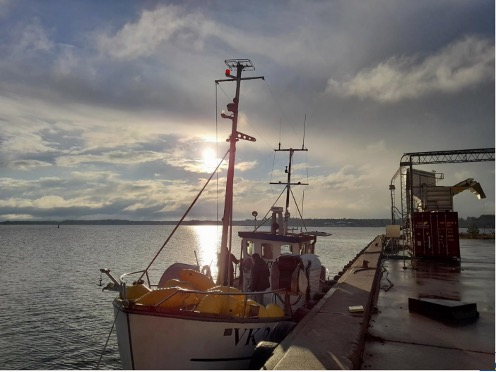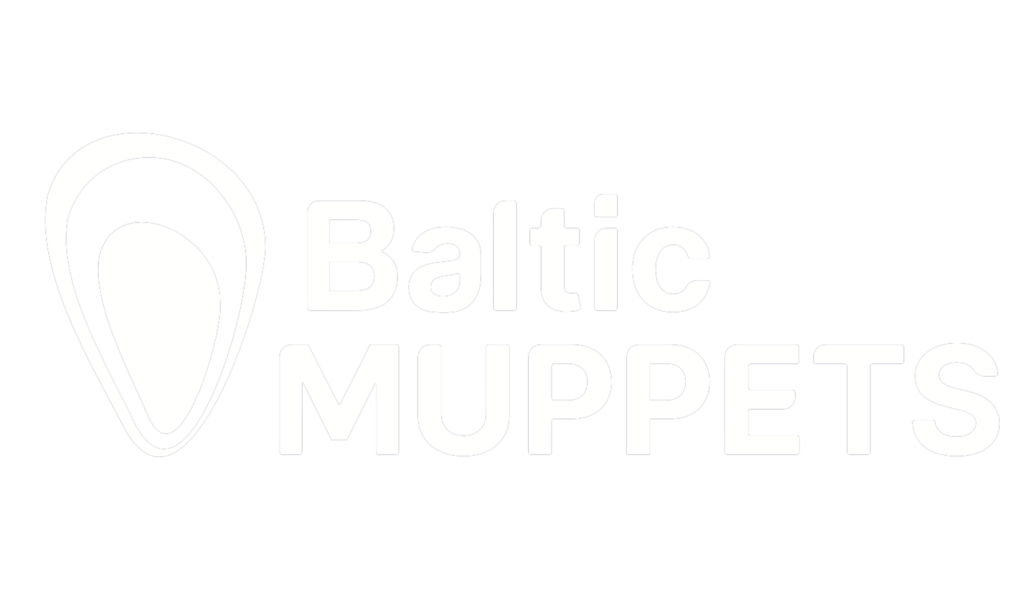
The inaugural year of the project has concluded! Over the last twelve months mussel farming activities expanded in Sweden, Denmark, and Germany. A new mussels processing factory was built and initial pet food products for dogs were developed and tested. The efforts invested have been substantial, resulting in promising results! As we look back on this initial year, we look forward to the next milestones that lie ahead.
Baltic MUPPETS, initiated in December 2022, is a three-year project jointly funded by the ERDF Interregional Innovation Instrument (I3) of the European Commission. It unites 13 partners from five countries, each contributing expertise across various sectors of the mussel supply chain. The project is centred around three mussel farm pilots situated in Sweden, Germany, and Denmark serving as demonstrative models.
Ready, Set, Grow: Mussel Farm Deployment in Denmark, Sweden and Germany
A key objective of Baltic MUPPETS is to develop and implement farming, harvesting, and monitoring solutions to advance and scale submerged mussel farming. During the first year of the project, the three pilots carried out different activities in pursuit of this goal in parallel:
In Denmark, Wittrup Seafood tested a new method to deploy concrete block anchors more precisely to the sea floor to fully submerge their system for mussel farming; large nets hold on 120 long closed PE-pipes. Due to the weight and size of the concrete blocks, placing them as anchors for net-farms was not a simple task. Transporting and handling these blocks required special machinery. Additionally, achieving precise placement in the underwater environment presented a unique challenge, but ultimately minimized the impact on the seabed. The new method used by Wittrup successfully made the process more efficient. By the end of 2023, 120 units (old and new) were in the water.
On the Swedish side, Ecopelag had a busy year with buying the equipment, mounting the mussel farm parts, acquiring the respective permits, deploying anchors and buoy ropes, and setting substrate ropes, just to mention a few activities. During the summer, Ecopelag took advantage of the fishing off-season and trained some local fishers to set substrate ropes on the longline units in Västervik. What a great opportunity to create synergies between mussel aquaculture and fishers! By the end of 2023, 10 new lines were established in Västervik with substrate rope on and 16 lines had been repaired at the St. Anna Mussel Farm in Östergötland.

Over in Germany, the Kieler Meeresfarm was actively engaged in preparing two units for monitoring and testing as part of the project and obtaining a successful settling last season. As a part of another project, Kieler Meeresfarm is implementing an eider duck fence at its farm. The eider duck is a heavy predator at mussel farms. Placing the fence around farms has been a successful measure to keep the migrating birds out and to encourage a more natural feeding behaviour.
Mussel Watch: Using Drones to Monitor Production, Nutrient Uptake, and Farm Durability
In the Baltic, mussels take between 1-3 years to be ready for harvest. This depends on the environmental conditions like salinity and food availability. Throughout this period, producers monitor monthly the growth using a GoPro camera or UV-drone operated from the surface to film the 3m-long substrates. Consistently filming the same sections allows tracking progress over time, facilitating the estimation of total biomass and mean mussel size. This is then complemented with samples taken from the section. Recognizing the need for more efficient monitoring, mussel producers are actively exploring technological strategies. The implementation of digital monitoring solutions presents an opportunity to farmers to streamline operations, reducing production costs associated with staff, time, and resources required for each monitoring trip.
As part of Baltic MUPPETS, the project seeks ways to monitor mussel production, assess equipment durability, and evaluate the positive impact of mussel farming on the aquatic environment. In November, in collaboration with students and faculty from the Business Academy Zealand, Blue Research embarked on a visit to the Wittrup Seafood A/S mussel farm in Limfjord, Denmark. Employing an advanced underwater drone, the team captured approximately 7000 photos of the submerged mussel farming operation, to estimate mussel biomass using specialized software. As part of this task, different methods and equipment will be tested to find the one most suitable for the different types of farms (i.e. net farms, long lines). For this, tests will be carried out at Kieler Meeresfarm, the German pilot.

Mussel Magic: New Mussel Processing Line in Sweden
Over the last year, the Baltic Sea Factory constructed a new mussel processing room from the ground up: new walls, plumbing, floor cover, a Steam boiler, and a processing line. The first step in the process is pressure cooking to easily remove the shells from the mussel meat afterward. After cooling, the meat and the shells are separated through a brine bath using Archimedes’ principle, this is that the specific density of the brine solutions causes the mussel meat to float while the shells sink due to their density. The meat fraction is then frozen to keep in stock for further processing, and the shells are collected as a side stream.

Waste not, shells are a resource!
Mussel shells, often considered waste in processing plants, hold tremendous potential as a nutrient-rich resource. To dive into this, as a first step, Groburket analysed Ecopelag’s separated mussel shells and identified potential marketable products, such as garden fertilizer, from mussel shells and waste. It is important to highlight that to be able to valorise side-streams, in this case, shells and other mussel waste, protocols must be implemented in the processing process to maintain the quality of the side-streams. Ecopelag tackled this by developing and implementing hygenisation and treatment of side streams. The next steps will include analyzing the composition of mussel shells and carrying out controlled compost experiments.
Beyond the Sea: Mussel Nutritional Testing and Product Development
Mussels stand as a rich source of protein and nutrients. The variable conditions in the Baltic Sea, such as salinity, temperature, and nutrient availability may influence the nutritional composition of mussels from the different project pilots. To better understand this, Rasha Shtay and her colleagues at the University of Kiel (CAU) in Germany embarked on the task of analysing the nutritional content of mussel meat from the different Baltic MUPPETS pilots.

In the past year, CAU carried out the first experiments for producing pet food pellets using an extruder. Extruders offer precise control over moisture, pressure, temperature, and mechanical shear during food production. All these variables have the potential to impact the nutritional content of the pellets. CAU aims to determine the optimal conditions for pellet production, ensuring minimal impact on nutritional composition.
Frosty bites: Pet treats from freeze-dried mussels
Over the past year, Ecopelag has taken on the exciting task of crafting pet treats using freeze-dried mussels. CAU has been a valuable support in this endeavour, diligently assessing the nutritional content of these delightful treats.

What lies ahead? Building on the current momentum, Baltic MUPPETS partners will continue pushing forward mussel farming and processing in the Baltic Sea region, creating innovative value chains for small Baltic mussels. Look out for new products for your family dog, cat or zebra fish?!


